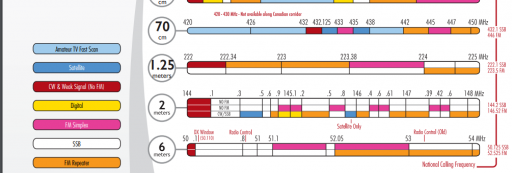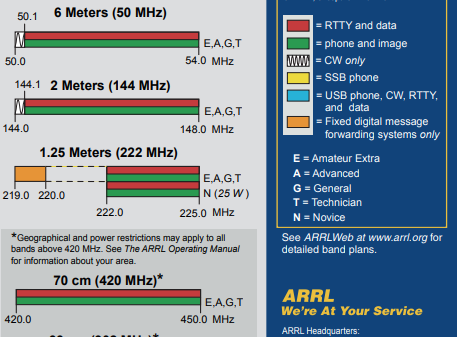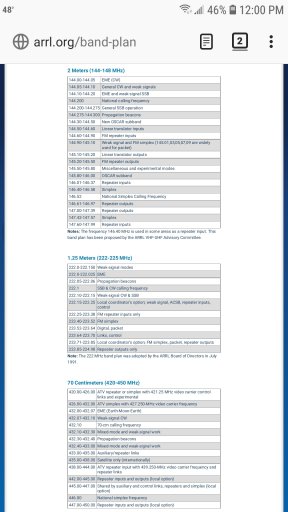Okay, so Im trying to take this all in and organize it into some type of cohesive/holistic chunk of info. Tell me what you guys think so far:
Here is what I got:
Amature Radio or HAM for off road use
(There’s a lot of info on this but I have to start somewhere)
2M | VHF 144-148 MHz
70CM | UHF 420-450 MHz (good for repeaters)
Range: varies quite a bit depending on radio, transmit power, antenna, and geography. Typical range of a handheld on the trail is realistically around 2-6 miles, but with clean line of sight, a good setup, and higher power output, distances of well over 25 miles can be obtained.
0.5-5w typical with a handheld / Up to 50w typical on mobile style units / Higher output possible on base station units / Higher outputs possible with amplification
CB 11M Band (Citizen’s Band) | 40 channels within the 27 MHz band
Range: CB power output is limited to 4 watts, so in a typical trail situation, the range is realistically about 3-4 miles.
GMRS (General Mobile Radio Service) | UHF 462.5500-462.7250 MHz
GMRS license required (no test, $65/5yr, covers immediate family)
Range: Similar to the VHF amateur radios, a typical range for GMRS on the trail is likely somewhere around 2-6 miles.
5-50W TX max
MURS (Multi-Use Radio Service) | VHF 151.82-154.60 MHz
Open consumer unlicensed use
2W TX limit
FRS (Family Radio Service) | UHF 462.5625-462.7125 MHz, 467.5625-467.7125 MHz
Open consumer unlicensed use
Range: FRS radios (which do not require the additional FCC license) are much lower power, and therefore the range is significantly reduced, making them less desirable.
0.5W TX max
Integrated antenna only
NOAA: 162.550, 162.400, 162.475, 162.425, 162.450, 162.500, 162.525
Channel Preferences:
For 2M Amateur use:
VHF 144-148 MHz
146.520 (National Simplex Calling) For linking up / listening. Then move to 146.500 for talking at length or veh to veh in route coms.
146.460 (the unofficial "overland calling frequency").
If occupied +/- One click of the dial.
520 to meet, 500 to chat, 460 to hit the tail.
This frequency is the generally accepted off-road calling frequency. Amateur operator etiquette means that this common calling frequency should be used primarily for initial contact. Any extended conversations or group use, like communication while on a trip or a trial run, should likely be moved to a different nearby frequency.
For 70CM Amateur use:
446.00 (National Simplex Calling)
For GMRS / FRS:
Channel: 15
For CB:
19 to connect, 17 to chat or veh to veh.
Start at 19, skip the french channel to go to 17, hit the trail, 16.
For MURS:
151.820 MHz (11.25 kHz)
151.880 MHz (11.25 kHz)
151.940 MHz (11.25 kHz)
154.570 MHz (20.00 kHz)
154.600 MHz (20.00 kHz)








